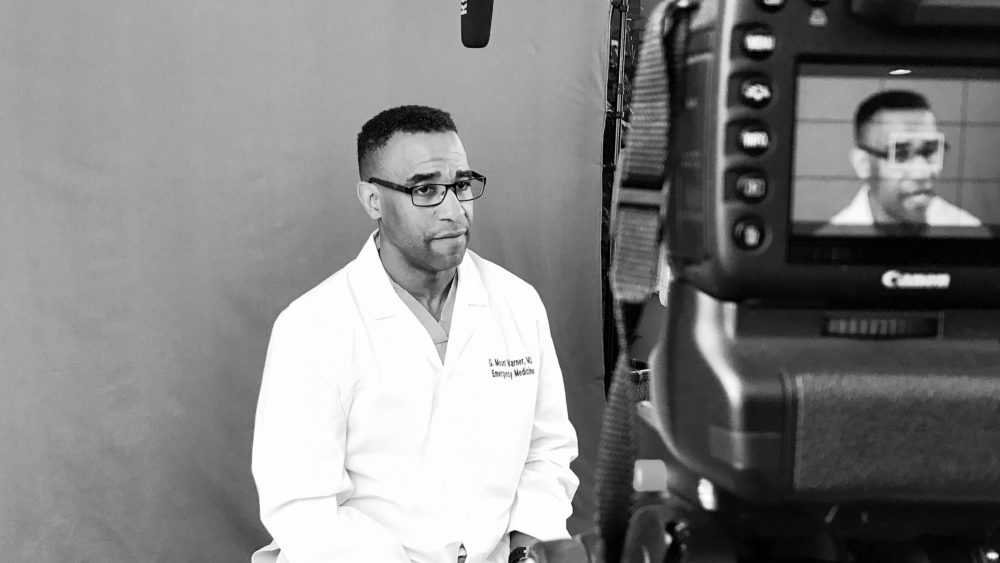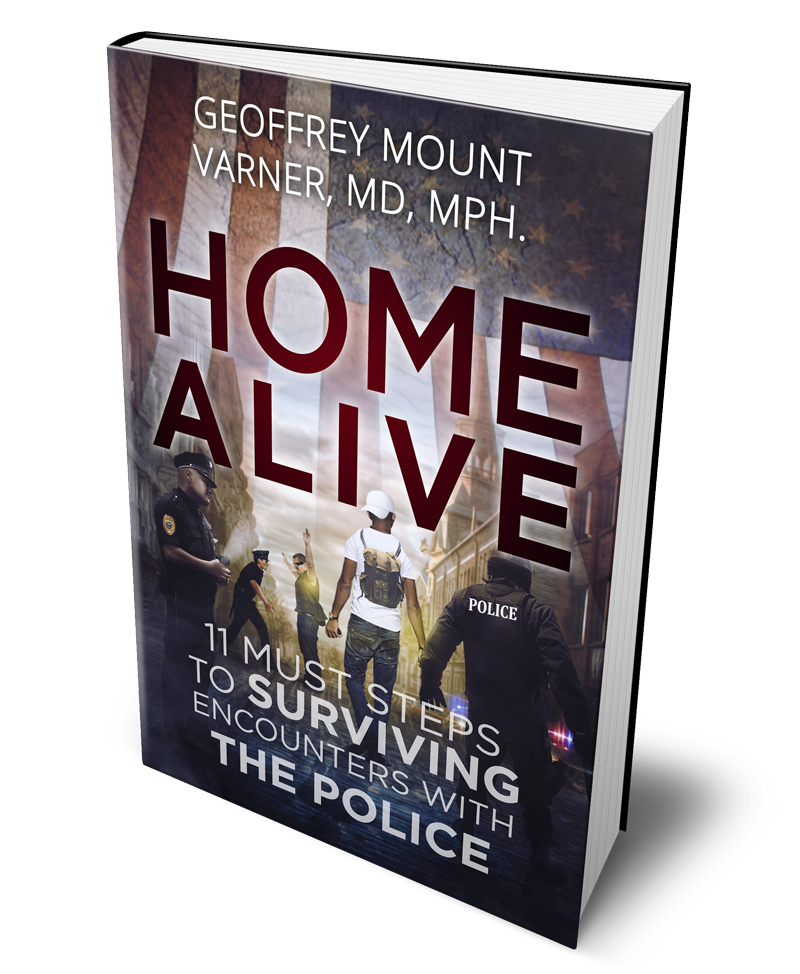Dr. Geoffrey Mount Varner of Dr Saving Lives shares:
6 Split Second Decisions that Every Student Should Be Able to Make

The human brain has been a fascination to many researchers and scientists, especially due to the decision-making process and the parts of the brain that are involved in this process. Research done based on human-based studies using functional magnetic resonance imaging has shown that there occurs a series or network of brain activity across the brain before a decision is made. The various parts of the brain showed different levels of activity with some parts having a lower level of activity until a decision was made. The researchers came to the conclusion that there exists a hierarchy of neural pathways in the brain that take part in the decision making process. There are specific cells and regions of the brain that are associated with the making of decisions such as the von economo neurons and the striatum. The striatum is associated with both the flexible and stimulus-response decision making. The interior side part of the striatum is the part involved in the stimulus-response process (Cookson, 2018). College students are faced with many situations that require split decisions to avoid danger or negative consequences. Many college students’ brains are not fully developed. Hence there is a need to have specific rules that one should NEVER do while in college. Five common circumstances that college students may face are included in the article.
6 Split Decisions that college students should never make:
- Should never ride in a car with a driver who is intoxicated or “buzzed”.
- Should not have sex without a latex condom- this includes fellatio (oral sex).
- Do not allow yourself to be drawn into a physical altercation.
- Never post anything on social media that you would be embarrassed if the whole world viewed it.
- Never attempt to hurt yourself – seek counseling if feeling down.
- Do not disobey a police officer’s command.
One of the main decisions that college students should be able to make within split seconds is whether the said student should get in a car with someone who is intoxicated. Numerous teenagers are faced with this decision and there exists a high possibility of poor judgment and peer influence. Despite the constant sensitization and civic education on the consequences of driving under the influence of alcohol or any related drug, there still seems to be a challenge on reducing the number of road accidents that are related to drunk driving. In many nations, there have been nationwide campaigns targeting the youth about the consequences of drunk driving. It seems that the only viable approach would be to instill a sense of responsibility that comes from within. It will enable the students to be confident and assertive enough to refuse to get in a car with an intoxicated person. The leading cause of deaths among teenagers is car crashes most of which are associated with alcohol. There are about 88,000 alcohol-related deaths reported annually with 70% being men and the remaining 30% being women. Alcohol is, therefore, the third leading preventable cause of death in the United States. Driving fatalities caused by alcohol impairment constituted 31% of the total driving fatalities (“Alcohol Facts and Statistics | National Institute on Alcohol Abuse and Alcoholism (NIAAA)”, 2018). 4300 deaths among underage youth occur annually due to excessive drinking (“CDC – Fact Sheets-Underage Drinking – Alcohol”, 2018).
Another decision that college students should make is the mandatory use of condoms among sexual partners. The use of condoms among teenagers/college students is wanting. Over the past few years, it would seem that the main worry of many sexually active teenagers has been to prevent unwanted pregnancies. With this in mind, contraceptives have been of the utmost importance amongst this group. When the main priority is to prevent unwanted pregnancies, many students seem to forget or take for granted the need to protect themselves from HIV/ AIDS and various sexually transmitted diseases. Since the discovery of the HIV/Aids virus, measures were taken to sensitize the public on the disease and the various prevention measures. The effects of HIV/Aids on the affected families and the society were more pronounced then because there were no drugs to lengthen the lives of those affected. With the advancement in the medical field, there was the introduction of antiretroviral drugs, the HIV/Aids symptoms were greatly reduced and managed to lead to a decrease in the stigmatization previously witnessed. This may be said to be the main reason why the youth seem to take the prevention of the virus casually. The highest STD transmission rates exist among the youth aged between 20-24 years. In the year 2016, youth aged between 13 and 24 years accounted for up to 21% of new HIV infection in the United States (“HIV Among Youth | Age | HIV by Group | HIV/AIDS | CDC”, 2018).
The decision on how one should retaliate to an offensive remark to an offensive person who is just next to him or her is determined by their cognitive ability to make split-second decisions. In the process of interacting with those around us, we tend to possess different moods and thoughts due to the pressure that comes up with the life of being a student where there are assignments, exams ahead, the pressure to perform and even the need of living within the boundary of the budget we have. Therefore, there is a need for avoiding to retaliate through violence or through being offensive. Being physical may lead to one injuring their colleagues. Being offensive may end up causing a confrontation that may still end in a fight.
Another split second decision that every student should be ready to make is what to post on social media. With the recent advancement in technology, the world has become linked and sharing information with friends and sometimes complete strangers have become very easy. Students should, therefore, be subjective in choosing what to share with the world. The understanding that what one shares with the world may be permanently on the internet and may affect one’s career and family should be considered before sharing any information or photos. There are numerous predators on the prowl for vulnerable individuals on the internet (“Perceptions of Cyberstalking among College Students”, 2018).
Attempting suicide may be as a result of hopelessness or desperation. In the year 2017 in the United States, up to 1.4% of all college students have attempted suicide. The existing statistical data show that suicide attempts are relatively prevalent among teenagers and college students. The decision on whether to attempt suicide may occur as a split second decision and so is the decision not to commit suicide. A sudden realization of all the things one looks forward to may contribute to a renewed zest for life. With this in mind, mental health awareness should be prioritized to reduce the suicide attempt cases among college students.
Every year a college student is injured by a police officer while on a college campus. There is this myth that campus police officers are not “real” officers. The vast majority of college campuses have sworn police officers with use of force and arrest authority. Comply with officers and protest later. Your goal is to make it Home Alive.
Summary
There is a need for any individual, including college students to have a good capacity of making split-second decisions. It is that one second, which may end up determining the future of an individual. Perfect examples, deciding what to post on social media, whether to use protection during sex, obey police officers, how to retaliate to an offensive remark, attempting suicide and even whether to go into a car being driven by a drunk driver. These are instances where one will only settle for one choice and the choice should always be the best.
References
Alcohol Facts and Statistics | National Institute on Alcohol Abuse and Alcoholism (NIAAA). (2018). Retrieved from https://www.niaaa.nih.gov/alcohol-health/overview-alcohol-consumption/alcohol-facts-and-statistics
CDC – Fact Sheets-Underage Drinking – Alcohol. (2018). Retrieved from https://www.cdc.gov/alcohol/fact-sheets/underage-drinking.htm
Cookson, J. (2018). Brain Confidence: How Our Neurons Make Decisions. Retrieved from https://bigthink.com/going-mental/brain-confidence-how-our-neurons-make-decisions
HIV Among Youth | Age | HIV by Group | HIV/AIDS | CDC. (2018). Retrieved from https://www.cdc.gov/hiv/group/age/youth/index.html
Perceptions of Cyberstalking among College Students. (2018). Retrieved from https://www.bing.com/cr?IG=40A89199CC8C4E6BA9575388A81D6336&CID=29A06A6CD879669302D06654D9846754&rd=1&h=2jLupbGdarLkoWiScWerbnXY8HB8EHDFx7LIRt9nVP0&v=1&r=https%3a%2f%2fwww.researchgate.net%2fpublication%2f31325303_Perceptions_of_Cyberstalking_Among_College_Students&p=DevEx.LB.1,5502.1



Comments are closed.